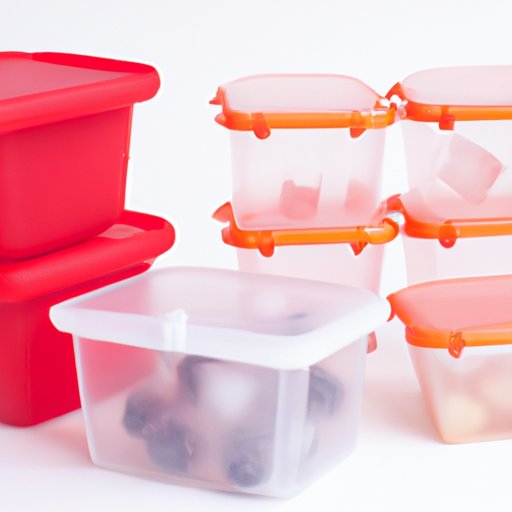
Can You Put Glass in the Freezer?
If you’ve ever wondered whether putting a glass container in the freezer is a good idea, you’re not alone. With so many different types of containers available, it can be difficult to know which ones are safe for freezing. In this article, we’ll explore the topic of using glass in the freezer, including the do’s and don’ts, the risks and benefits, and how to maximize your freezing potential.
The Do’s and Don’ts of Freezing with Glass: The Truth About Whether Glass is Safe for Your Freezer
Before we dive into the specifics, let’s first discuss the basics of freezing food and the role of containers. Freezing food is a great way to extend its lifespan and preserve its quality, but it’s important to use the right container to do so. When it comes to using glass containers in the freezer, there are a few things to keep in mind.
First off, it’s important to choose the right type of glass. Not all glass is created equal, and some types are better suited for freezing than others. Look for thick, tempered glass containers that are designed for use in the freezer. Avoid thin, fragile glassware that may shatter or crack under cold temperatures.
It’s also important to consider the shape of the container. Flat, rectangular containers are ideal for freezing food, as they allow for even temperature distribution and are easier to stack in the freezer. Avoid round, spherical containers as they may take longer to freeze and may not sit flat in the freezer.
Glass in the Freezer: The Surprising Answer You’ve Been Searching For
So, the question remains: can you put glass in the freezer? The answer is yes, but with some caveats. When used correctly, glass containers can be perfectly safe for freezing food. They are durable, reusable, and won’t leach any harmful chemicals into your food.
That being said, freezing food in glass containers does come with some risks. One of the biggest concerns is shattering or cracking. Glass can break under extreme shifts in temperature, so it’s important to avoid sudden temperature changes. Always let your food cool to room temperature before placing it in the freezer, and avoid putting hot or warm glassware directly into the freezer.
Breaking the Myth: Debunking Common Misconceptions About Freezing Food in Glass Containers
There are a lot of misconceptions floating around about glass and freezing. For example, some people believe that all types of glass are created equal and can withstand cold temperatures. Others think that glass is too fragile to freeze and will break easily.
The truth is that there are many different types of glass, and some are better suited for freezing than others. Tempered glass is designed to withstand extreme temperatures (both hot and cold) and is a great option for freezing food. Thin, fragile glassware, on the other hand, should be avoided.
Frozen Assets: Maximizing Your Freezing Potential and Protecting Your Glassware
If you do choose to freeze food in glass containers, it’s important to take some precautions to protect your glassware and maximize your freezing potential. Here are a few tips:
- Leave room for expansion: As food freezes, it expands. Leaving a little bit of room at the top of your glass container will prevent it from cracking or breaking under pressure.
- Avoid sudden temperature changes: Never put hot or warm glass directly into the freezer. Always let your food cool to room temperature first.
- Store your glassware properly: Avoid stacking glass containers on top of each other, as they may crack under the weight. Instead, try storing them side-by-side or on their own shelves.
DIY Freezing Solutions: Alternatives to Glass That May Surprise You
If you’re not sold on the idea of freezing food in glass containers, there are plenty of other options available. Silicone and plastic containers are both great alternatives that can be safely used in the freezer. Here are some things to keep in mind:
- Silicone is durable, flexible, and won’t break or crack under cold temperatures. Plus, it’s non-stick and easy to clean. However, it can be difficult to stack and may take up more space in your freezer.
- Plastic containers are lightweight, inexpensive, and easy to find. However, they can be prone to cracking or breaking over time, especially when exposed to extreme temperatures.
Conclusion
When it comes to freezing food in glass containers, the key is to use the right type of glass and follow some basic guidelines to protect your glassware and ensure a successful freeze. Whether you choose to use glass, silicone, plastic, or another option, the most important thing is to understand the facts and make an informed choice.
So go ahead and put that glass container in the freezer, but remember to let it cool first and leave a little room for expansion. Your frozen assets (and glassware) will thank you.




